This coming Sunday night begins the holiest period for Jews around the world that is called the Days of Awe. These holy days last from sunset Sunday night (September 13th) until sundown the night of Yom Kippur on September 23rd. My synagogue, Congregation Beit Simchat Torah (CBST), holds its Rosh Hashanah and Yom Kippur services at the Javits Center and has an open door policy.
Kol Nidre services attract thousands of individuals from all walks of life regardless of different gender and sexual identities or religious affiliations. Since services are usually on the upper level, it is with great awe that we see the sun set over the Hudson River as services begin. To me it brings me closer to this mysterious experience we call life..
Since 9/11, the Kol Nidre service was and remains the most emotional for me. On September 26, 2001, Kol Nidre and Yom Kippur services were held at the Javits Center. That year, Kol Nidre was recited downstairs with U.S. Military and NYPD being stationed upstairs. Over 6,000 people attended and pictures of missing people were posted all over the area. Many of our military and first responders were of Jewish, Muslim, Christian, or Atheist backgrounds but still attended the service. Tears flowed then, as they do now, during Rabbi Sharon Kleinbaum’s moving, emotional, sad, and uplifting service.
The month of September is very busy for the Jewish people as there are three holidays falling within the same month, Rosh Hashanah, Yom Kippur, and Sukkot. Rosh Hashanah is the beginning of the Jewish New Year that celebrates the anniversary of the creation of Adam and Eve by G-D. Rosh Hashanah is both joyful and solemn as it welcomes the New Year and hopes for a good and sweet life. Rosh Hashanah begins on the evening of September 13th and ends the evening of September 15th.
Apples or other fruit are dipped in honey to symbolize the wish for a sweet year. The shofar (a curved horn) is blown to symbolize that G-D is present and calling upon all to gather in prayer and reflection. The belief is that on Rosh Hashanah, G-D opens the Books of Judgment and reviews the life of all creatures he has created: human and non-human.
It is interesting to note that the Hebrew Rosh Hashanah is etymologically related to the Arabic Ras as-Sanah, the name for the Islamic New Year which this year falls on October 14/15. The appropriate greeting for Rosh Hashanah, Yom Kippur, and the days in between is Happy New Year (L’Shana Tovah).
Yom Kippur, The Day of Judgment, occurs ten days after Rosh Hashanah, beginning the evening of September 22nd and ending the evening of September 23rd. These ten days are a period of time to give meaningful thought and prayer to what one has done wrong over the past year and to pray for forgiveness. The 10 days between Rosh Hashana and Yom Kippur is also a time to ask forgiveness from people one may have wronged, not just from G-d, and to attempt to amend ones behavior from sin to righteousness.
Unlike what some people believe, Yom Kippur is not a day of celebration. The appropriate greeting is “May you have an easy fast”, “Tzom Kal”, or “May you be inscribed in the book of life.” It is not appropriate to wish a person a “Happy Yom Kippur” just as it would be inappropriate to say “Happy Good Friday.” During the twenty-five hours of prayer Jews refrain from eating or drinking as the day is set aside for prayer and reflection. On the afternoon of Yom Kippur the Yizkor service occurs and it is a solemn memorial service at which Jews remember those who are no longer with us. In addition to remembering my parents of blessed memory, I remember and say the names of other relatives, friends, and parents of friends who are no longer with us physically. In recent years I also pray for those animals which have been abused and killed. Payers for healing (Mishebeirach/Refuah) are said. This year I will personally include Sharon Hyman, Father Richard Gorman, and Sylvia Lask and others.
It is at the close of Yom Kippur that G-D closes the Books of Judgment, as well as the holiest day on the Hebrew calendar. For many years my very close friends Bill Hevert, Larry Bartelsen, Julia Engel, and another close friend join me. Despite the fact that Bill, Larry and my other friend are not Jewish they go for the spirituality of the service.It is in this sense of spirituality that I suggest that all consider attending Kol Nidre at CBST the night of September 22nd.
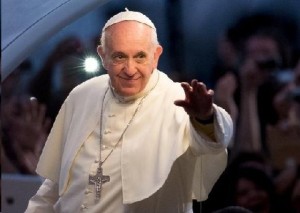 This year Yom Kippur occurs immediately prior to Pope Francis’s unprecedented address to a joint session of the U.S. Congress. Yom Kippur is in fact a very appropriate way to support Pope Francis’s message to the United States and the world. Yom Kippur is the day of both Atonement and At-Onement. On Wednesday evening, as Yom Kippur is ending, there will be many multi-faith vigils in Washington D.C. and elsewhere to usher in the Pope’s address the next day.
This year Yom Kippur occurs immediately prior to Pope Francis’s unprecedented address to a joint session of the U.S. Congress. Yom Kippur is in fact a very appropriate way to support Pope Francis’s message to the United States and the world. Yom Kippur is the day of both Atonement and At-Onement. On Wednesday evening, as Yom Kippur is ending, there will be many multi-faith vigils in Washington D.C. and elsewhere to usher in the Pope’s address the next day.
As I wish my Jewish friends and relatives a Happy New Year and an easy fast, I pray that the New Year will see peace, shalom, and salem for all and that we see less hatred and abuse in this sphere we call earth.


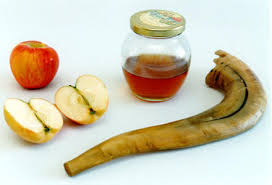

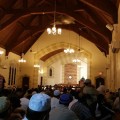
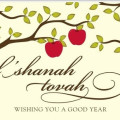
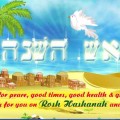











Follow Us